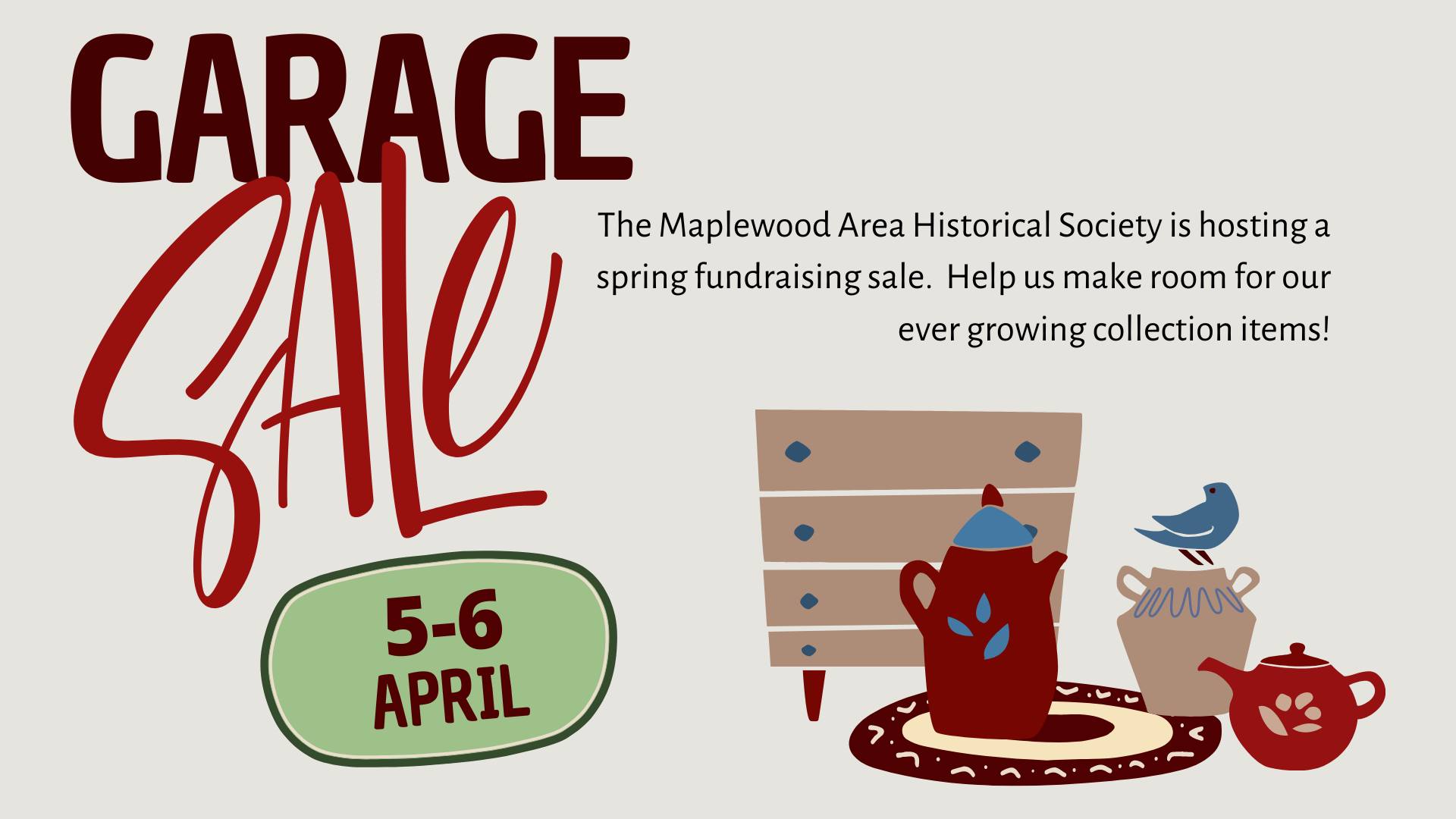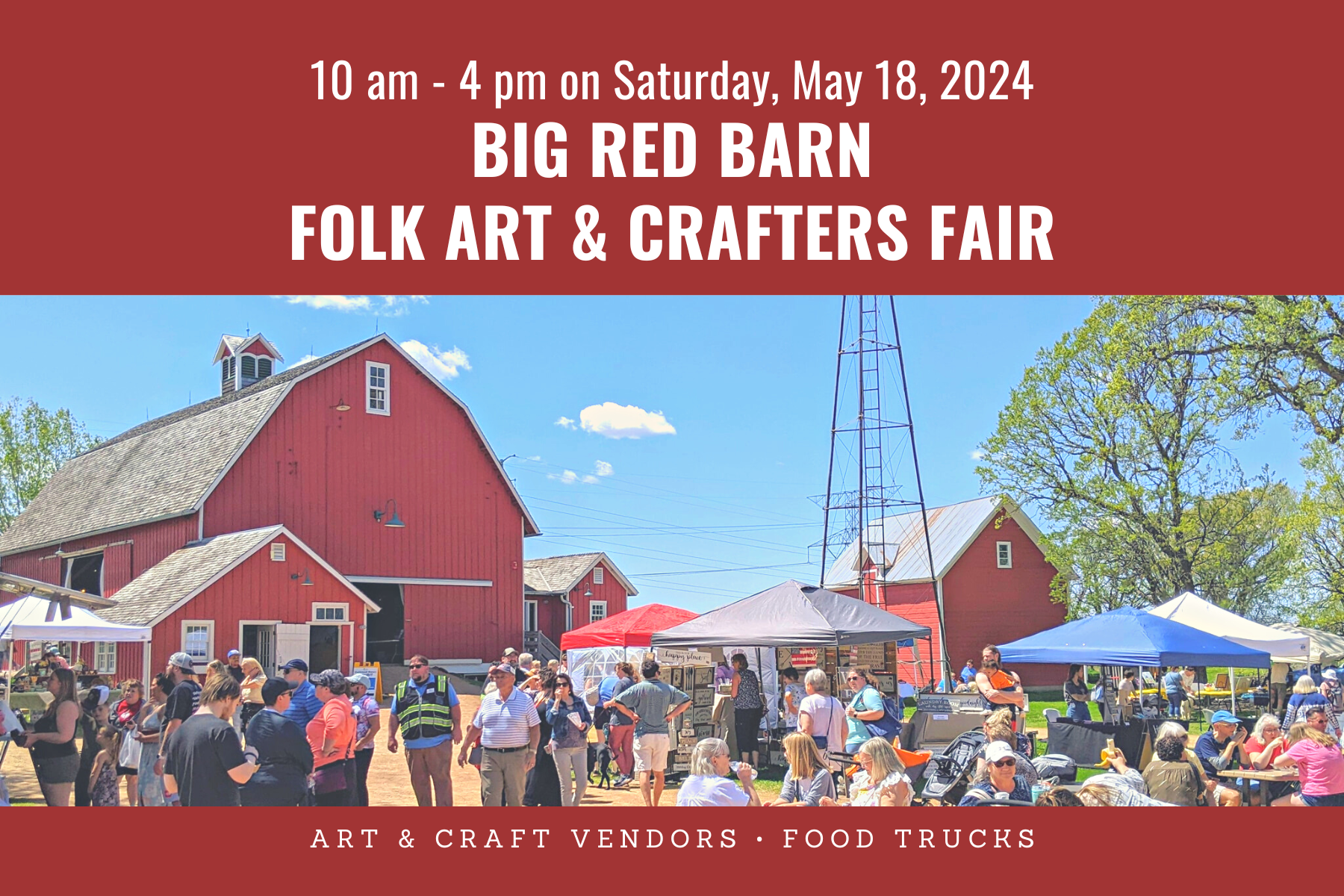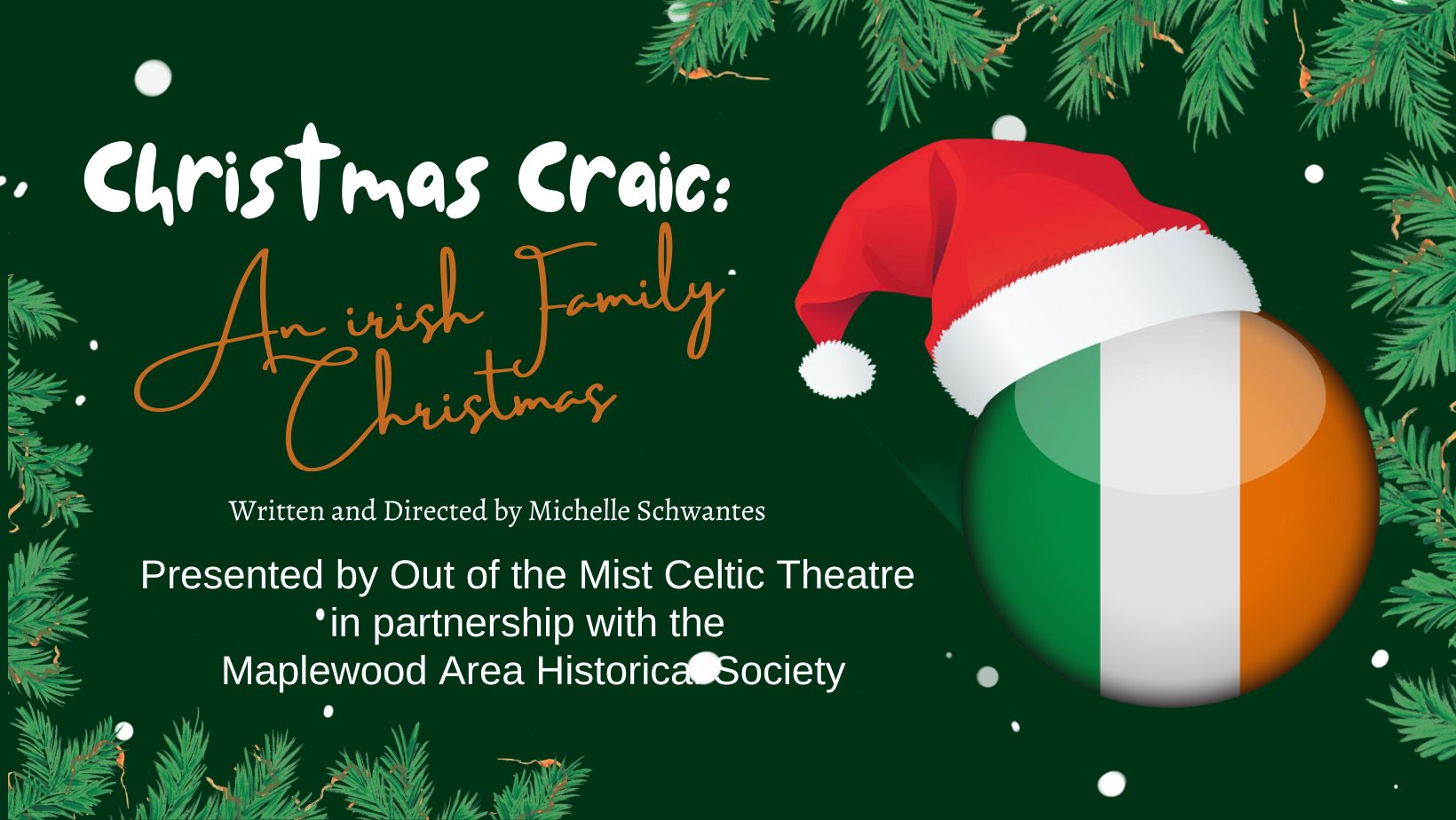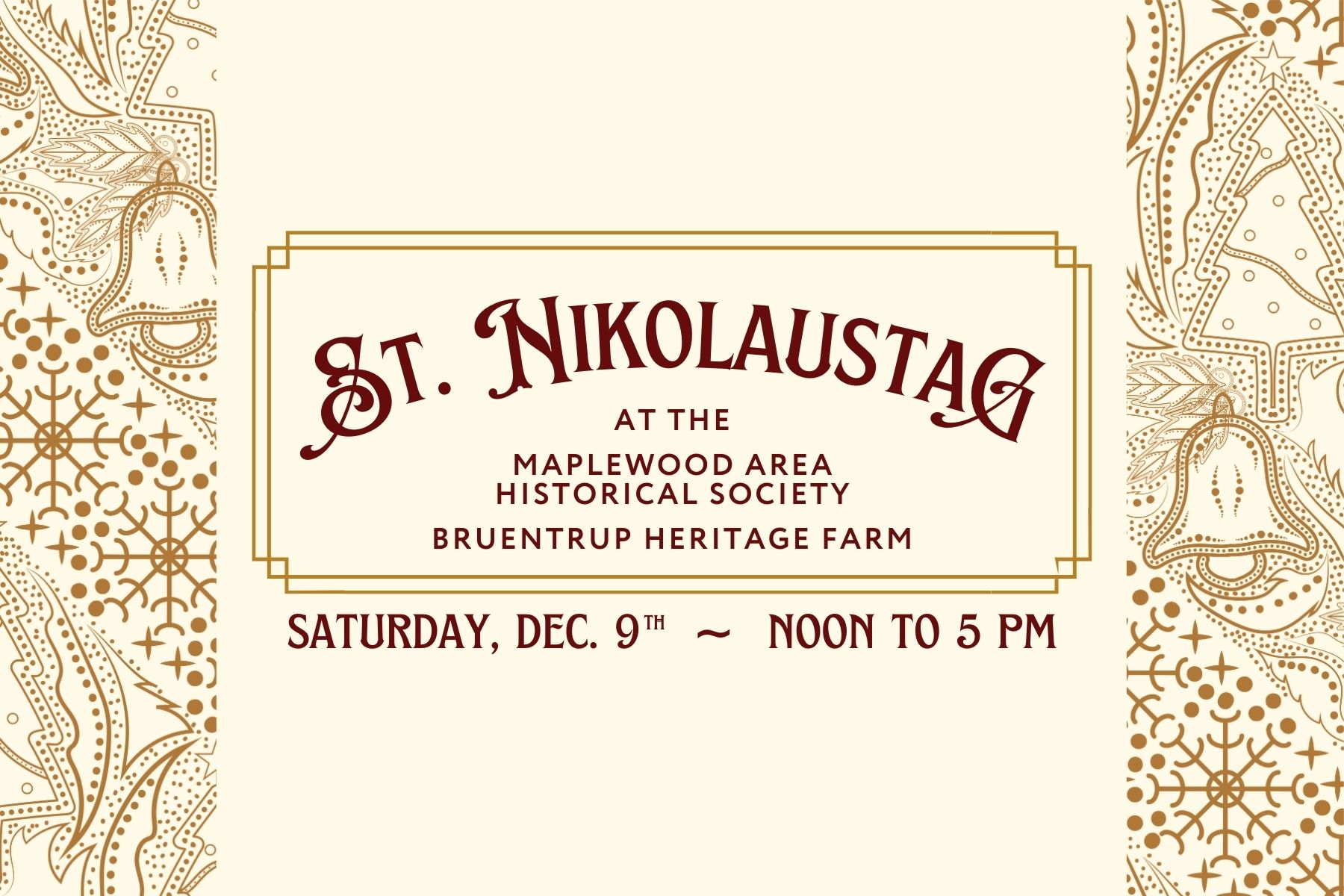
Internship Diary 2023
Friday, June 16, 2023
Kyli Knutson
An Intern’s First Week at MAHS
I’m really excited to be working here at the Maplewood Area Historical Society! I’m just in awe of how supportive a workplace it is as I’ve never really had that before at my other jobs. Everyone here really cares about my progress and opinions on what we’ve done that day. It’s extremely refreshing to see that in a work space.
When I come into work, the setting and the overall atmosphere of the Bruentrup Farm makes me feel like I’m anywhere else but at my job (as the pictures show)! It’s so beautiful and such a relaxing place to research and write! This first week felt a little bit more like school, as we got to listen and learn from a variety of different museum professionals in Minnesota. They all shared such valuable information about museums and the inner workings of them, with lots of things I never knew before, as I haven’t been lucky enough to work in one until now. I’m really looking forward to learning more about the museum field and being a part of the Maplewood community, while here at MAHS this summer!
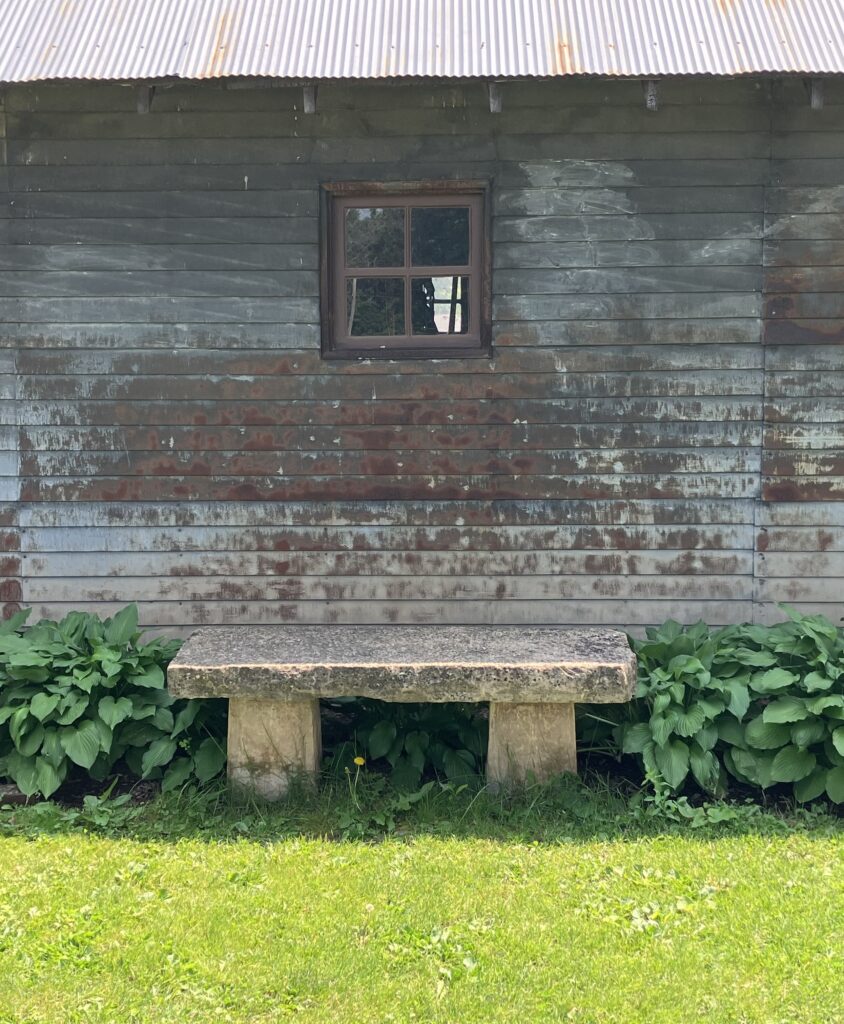
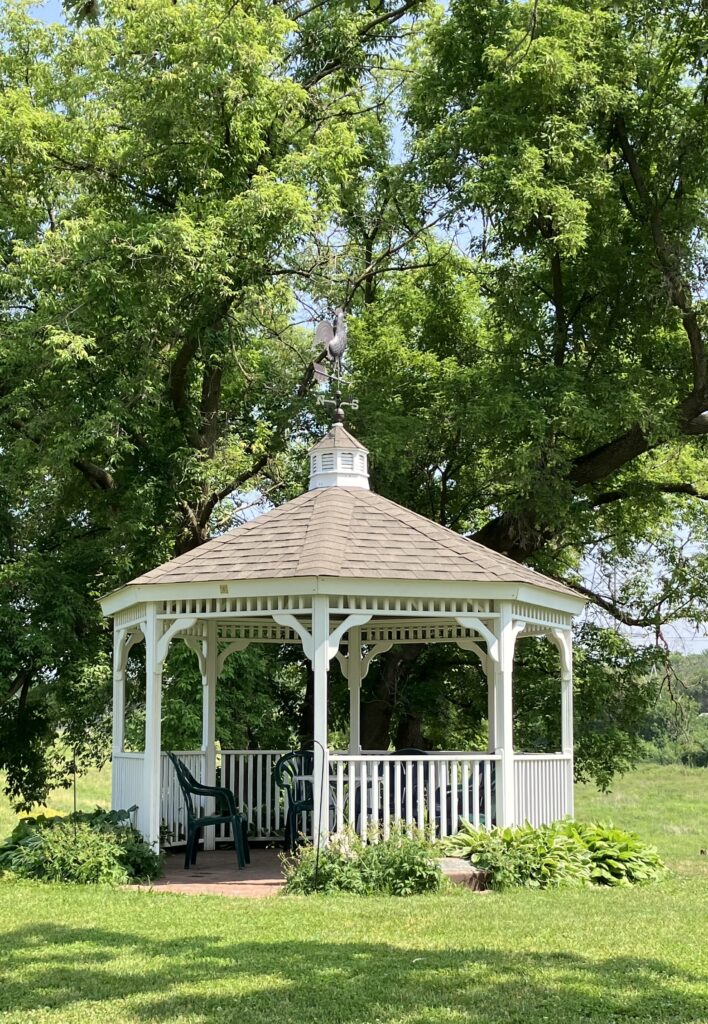
Nora de Rege
Tuesday, June 20, 2023
After the first week of the nonprofit leadership, there are three words that sum up my experience: “Welcome to museums.” After ruminating over those three words, I realized it encapsulates all that arises when working at a local history museum. This phrase was said when we found a water leak in the barn, when an outlet in our meeting room did not work, and when a photographer fell through for an event. It was also said when we discovered a photograph while digging through the Lillie Newspaper Collection that was perfect for the 1980s pop-up exhibit we were designing. Those words were used to describe our mentor sessions with Claudia Nicholson, “The
Museum Lady”; Gibson Stanton, the coordinator of the Minnesota Alliance of Local History Museums; Ann Grandy, the Pope County Museum Collections Manager; and Brittany Johnson, the MAHS Director of Communications. In that context, “welcome to museums” meant having the space and time to build relationships and network with those who have been in the museum world for years.
Despite all the challenges that arose during the first week, the honesty of the MAHS staff, and the unwavering support and care extended to me and the other interns through all of those obstacles, made me feel welcome. I anticipate that there will be many other challenges that come up over the next nine weeks of this internship, but if this past week was any indication as to how those challenges would be, I feel prepared for whatever comes up. There is a wonderful team of people who work at MAHS and other local history museums across Minnesota who have each other’s backs and will work together to create an inclusive and safe working environment in order to achieve their mission of educating, sharing, and preserving our local history.
While I have much to learn, I can safely say that I definitely feel “welcome” into museums. To summarize my week, I have selected a few photos that I took on my phone with terrible quality. The first is the view when you exit the historic Bruentrup Farm House and sit on the porch, which is a new favorite work site on the farm! The other photo is of a section of the Lillie Newspaper collection, located in the basement of the historic farm house. We sat in the basement for hours while smoke overtook Minnesota, and we pored over local photographs and newspapers from the 1980s. On a day like that, when the sky is gray and the air is thick, collection storage becomes my favorite place to work. Thank you to all the mentors and MAHS employees who welcomed me, Kyli, and Brett into the Minnesota museum world. I cannot wait to see what the future holds for us.
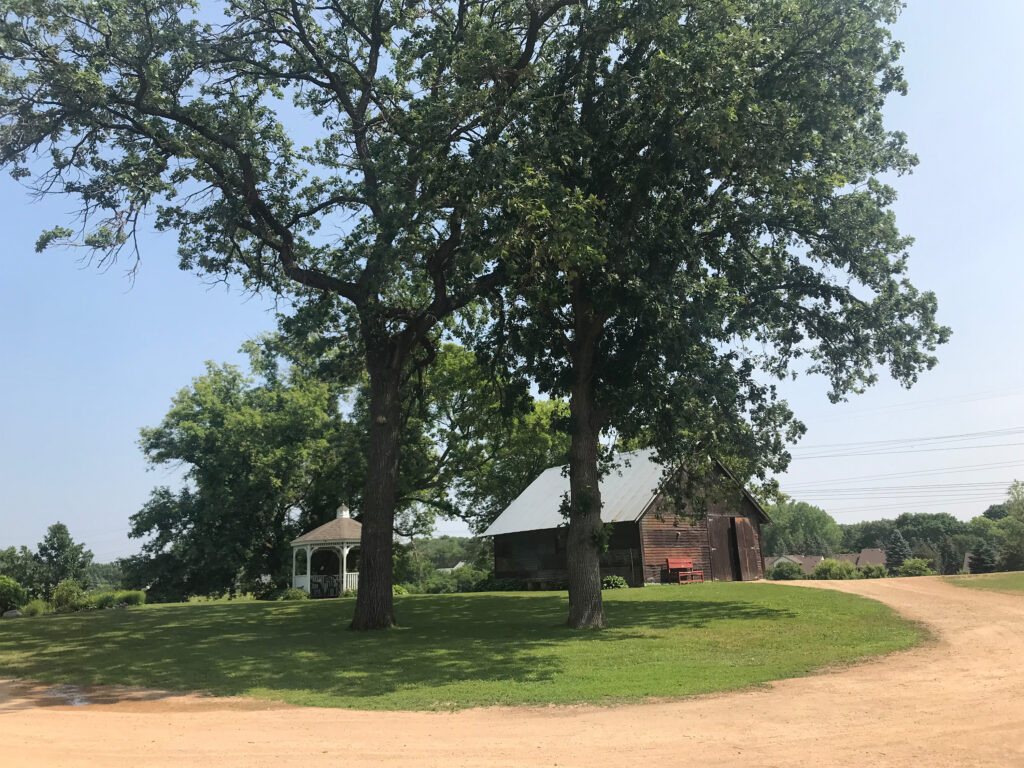
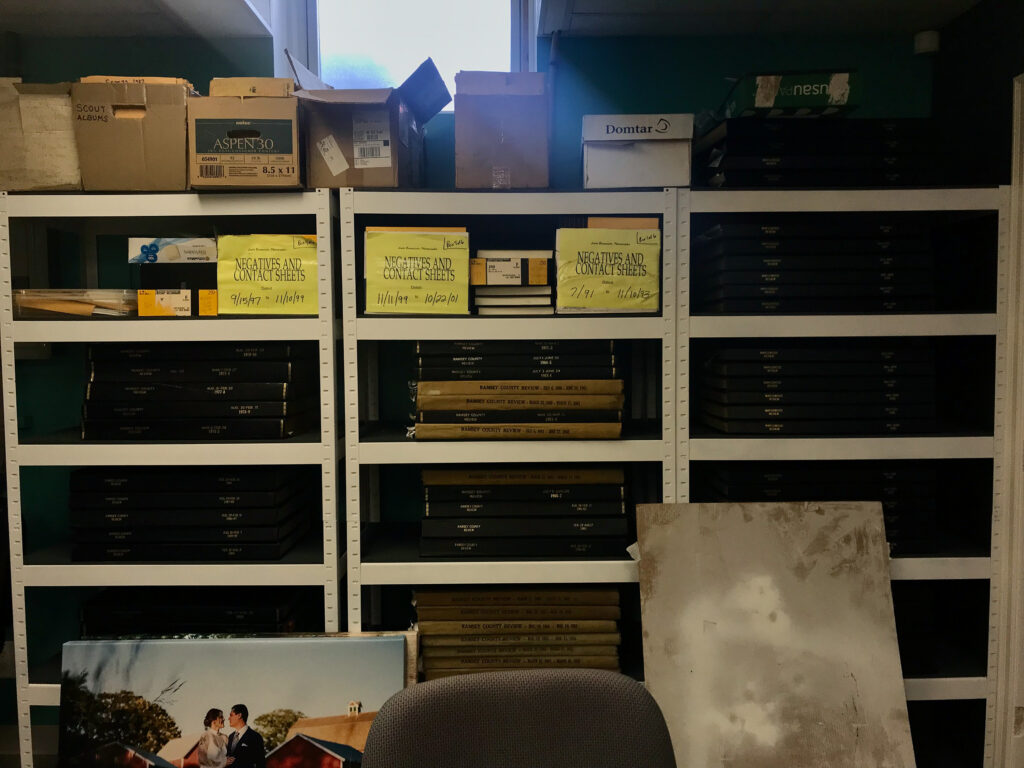
Thank you to all the mentors and MAHS employees who welcomed me, Kyli, and Brett into the
Minnesota museum world. I cannot wait to see what the future holds for us.
Tuesday, June 27, 2023
Nora De Rege
Diving into Textiles
This past week, us interns dove into our first long term project: gathering, sorting, and documenting all of the textiles located on the Bruentrup Heritage Farm’s 12 historic structures. I was energized going into this project, as textiles fascinate me. When at a museum, I always seek out knitted and quilted pieces, and spend so much time poring over each detail, imagining the labor, dedication, skills, and effort put into creating such intricate and unique objects.
This project, as an introduction into the depths of the Maplewood Area Historical Society’s collection, has had the effect of slightly sullying my opinion of textiles. Instead of pristine quilts with rich histories, I found myself climbing up ladders into hot lofts, coated in a layer of dust and grime, and picking through boxes of old doilies, stained and moldy. I found myself digging through towers of hat boxes, taking in musty scents and imagining strands of hair left behind.
Even writing about it from the comfort of my own home sends a shiver down my spine.
Yet, despite the challenges that have defined the initial week of this 10-week project, I can imagine a better future for these textiles, and I am excited to discover the secrets and fascinating stories this collection holds underneath the layers of mold and dust. And, at the end of the day, I am looking forward to the sense of accomplishment and relief that I will feel when this project is finally completed. These textiles will finally have a permanent and safe home with powerful and interesting stories that can be shared with all of you! At the end of the day, that’s what this collection work is all about: preserving our history so we can share it with all of you!
– Nora
Image: Old hat boxes we have in our collection. This picture was taken after Brett and Amy organized the farm house in preparation for multiple events this past weekend!
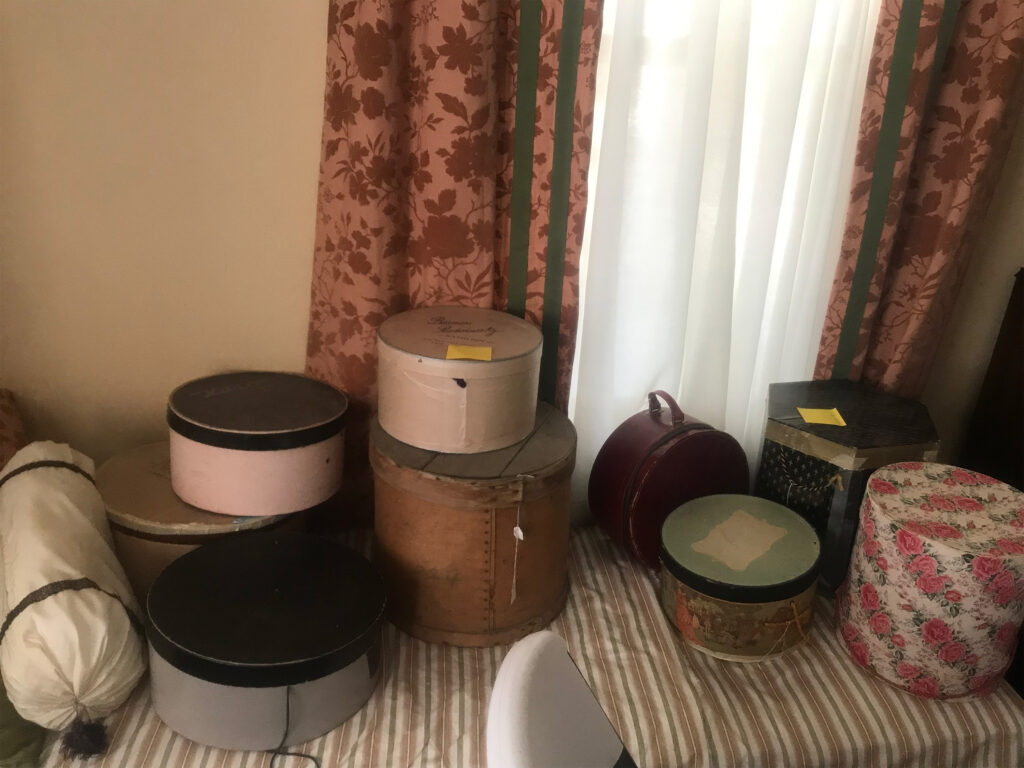
Tuesday, June 27, 2023
Kyli Knutson
Contemplating the Capstone
As I went in and out of the Bruentrup Farmhouse last week, I started to notice all of the old books scattered around the house, placed there more for room setting than as actual artifacts. It made me start to wonder though, what books were around in 1912, and what kind of books would a farm family read/own? What genres were even popular at this time and how did it differ between age groups and family roles, like what would Dad be reading compared to his son? Since I’m a big reader myself, I’ll admit that part of me wants to do this project to gain more book recommendations and find more books to read, but also I’m interested in how these books define a person and help you get to know them, even though they are from the past. I think it’s important for me to remember, also, that maybe reading wasn’t as big a hobby for a 1912 family as it is for me and to be prepared if that’s the case. Or maybe it was a bigger hobby considering they didn’t have cell phones or computers, hobbies were not as expansive as today (considering technology) so was reading a popular pastime?
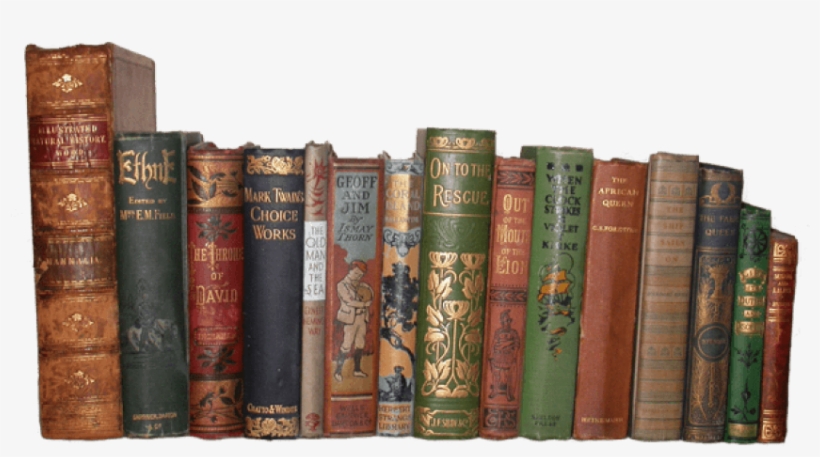
The reason why I’m talking about all of these questions is because one of our required projects for this internship is completing a Capstone project. It can be about anything as long as it concerns museums or maybe something about Maplewood or the Bruentrup Heritage Farm. RIght away, I knew I wanted to do something with the farmhouse and the time period where it reached its heyday, sort of (1912). I’ve had a lifelong interest in the Titanic and the Edwardian/Progressive era so this sorta just clicked as a topic for the Capstone. It combines my love of reading, one of my favorite time periods, and my interest in family history, all together in one neat little project!
I hope that others will find it interesting as well and if you are, stick with my blog posts for further updates over the summer!
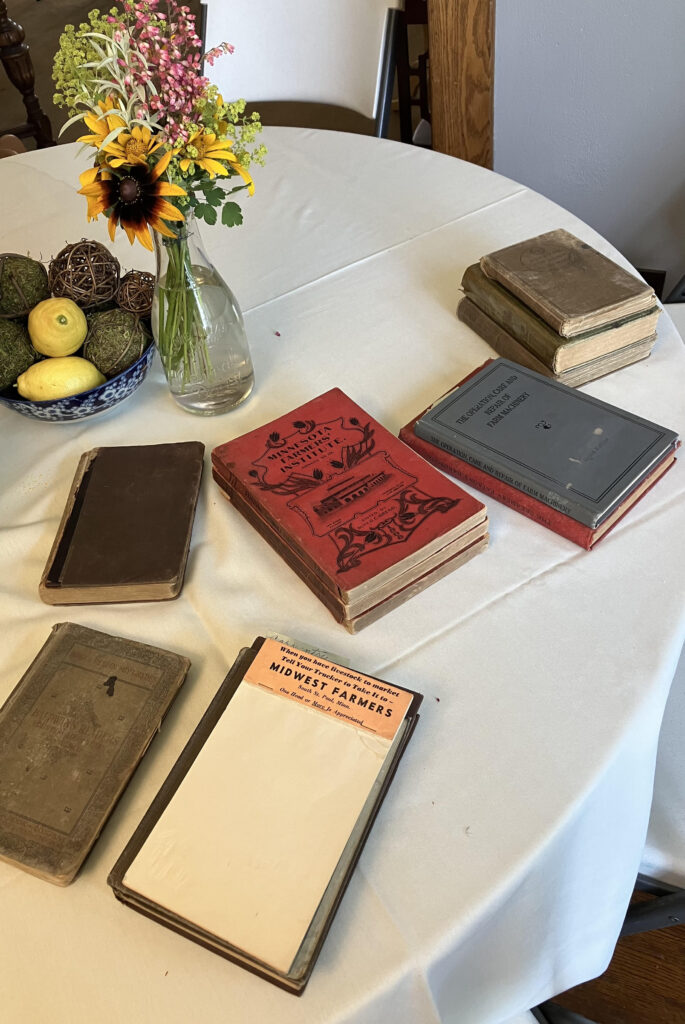
Friday, June 30, 2023
Nora De Rege
Exhibit Design: A Blessing and A Curse
Last weekend, I went to the Science Museum of Minnesota in Saint Paul. As a well-funded and large museum, I went into the experience expecting incredible, interactive, and visual exhibits, with powerful information disseminated in an approachable way– I was not disappointed! I was especially amazed by the temporary exhibit, “Exquisite Creatures,” and I have included a couple of images I took during my walk through of the exhibit!
However, instead of spending time learning about dinosaurs, fascinating inventions, or biophilia, I wandered through the exhibits, taking note of exhibit design, flow, and accessibility of text. While my friend would be reading about fossils, I would joke about what would be a more effective use of space, or about how much text there was. While there was not too much to complain about, I have discovered the burden of learning about exhibit design during this internship. I now get caught up in the subtle details of language, font, and interactives, and I glaze over the information that I went to the museum to learn.
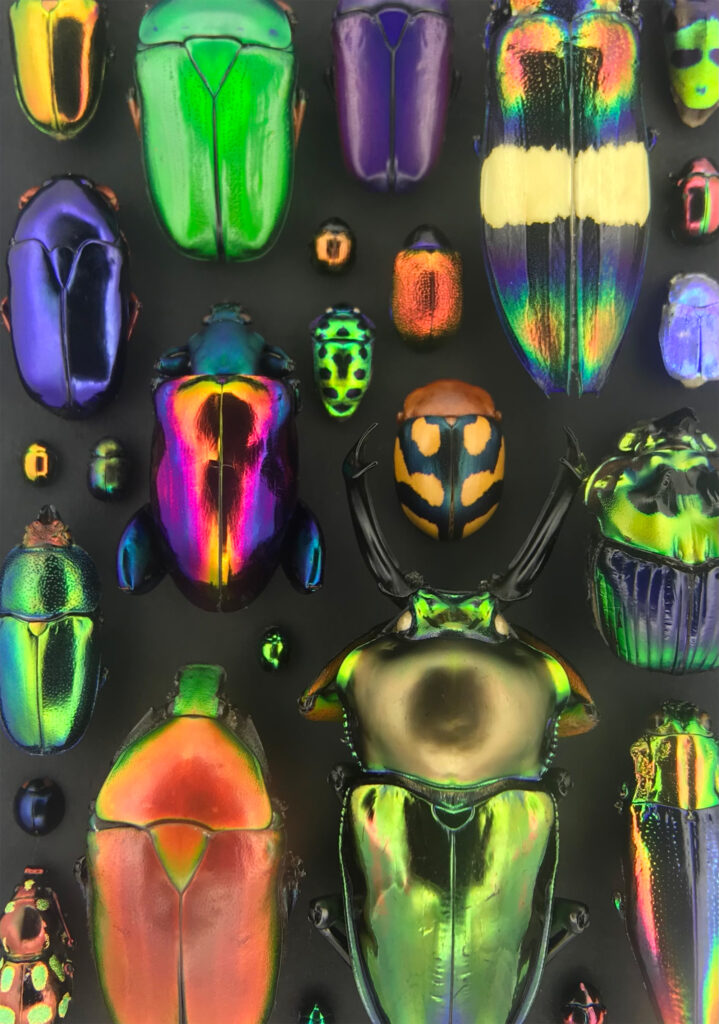
Yet, this newfound lens through which I view exhibits is not only a curse. I am grateful to have developed a new skill that allows me to be critical of the world around me in a way that is generative. My critiques and observations, as an emerging exhibit designer and museum professional, allow me to recognize what I believe a perfect exhibit should be. I am starting to understand what design elements I am drawn to in exhibits, and the methods designers use to create those experiences. It is powerful to know yourself and recognize the ways that you engage with the world most effectively.
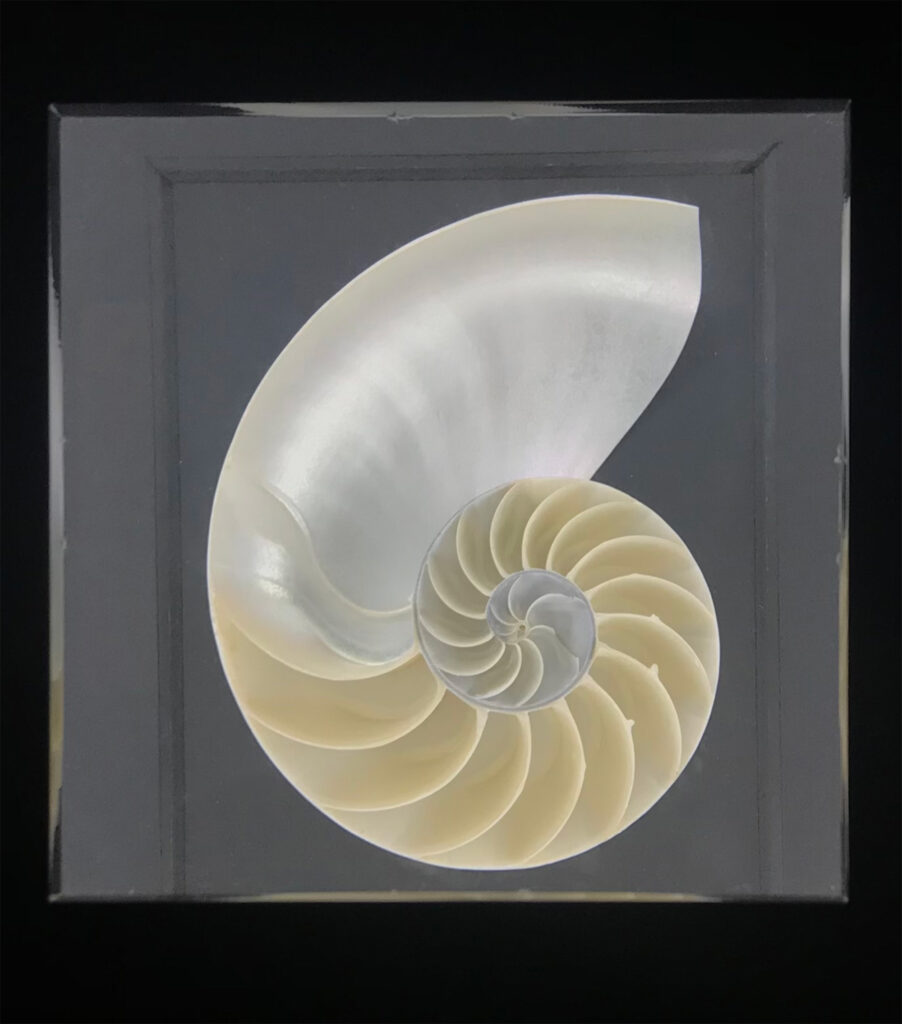
In order to develop a sense of exhibit design, we visited three historical sites and cultural centers over the past few weeks. I am also grateful for the opportunities we had to visit Washington County Historical Society’s Heritage Center, White Bear Lake Area Historical Society’s Armory, and Hoċakata Ti! I could not recommend visiting these sites more. Their wonderful exhibits were so different from each other, and both had elements that were powerful, engaging, and compelling.
From those site visits and conversations with curators, designers, and directors, I was able to better understand how different organizations make design choices, and find some common ground between those choices. I am eager to keep exploring exhibits and nitpicking design elements, hopefully while still learning about aspects of history, science, and art.
Friday, July 7, 2023
Kyli Knutson
One of my favorite things with museum exhibits is when they encourage and implement interactivity within them, especially when they can make it fun for both kids and adults! The Washington County Heritage Center, which we visited this past week, does this to a tee. Two of their exhibits, “John Runk: A Curious Mind” and “From the Woods to the World,” have both the interactivity and accessibility for all ages, a difficult thing to achieve. And it looks amazing! Everything about it is carefully selected and implemented to be part of a specific narrative that the exhibit wants to tell. For example, the carpet on the floor in the “From the Woods to the World” exhibit, gently guides the viewer through the story of a log, down the river (blue carpet) and ultimately into whatever the wood ends up creating (tan and green carpet, representing the forest and buildings where wood is shaped).
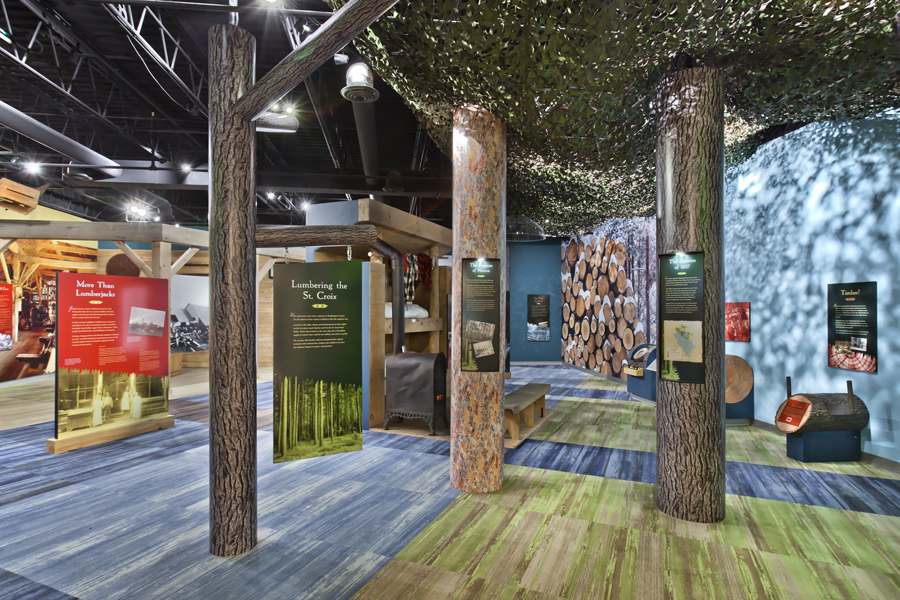
You get the feeling that you’re walking into a forest when you step into this exhibit and that’s just so cool that they were able to achieve that. I walked in and it immediately reminded me of the Minnesota Zoo and going down the Minnesota Trail section where it looks like you’re under a river, but here you’re under a canopy of trees! I love when a museum brings you into the story, into the past, by encouraging engagement with it, whether consciously (opening the wood cabinets as pictured below) or unconsciously (stepping along the path of the log on the carpet).
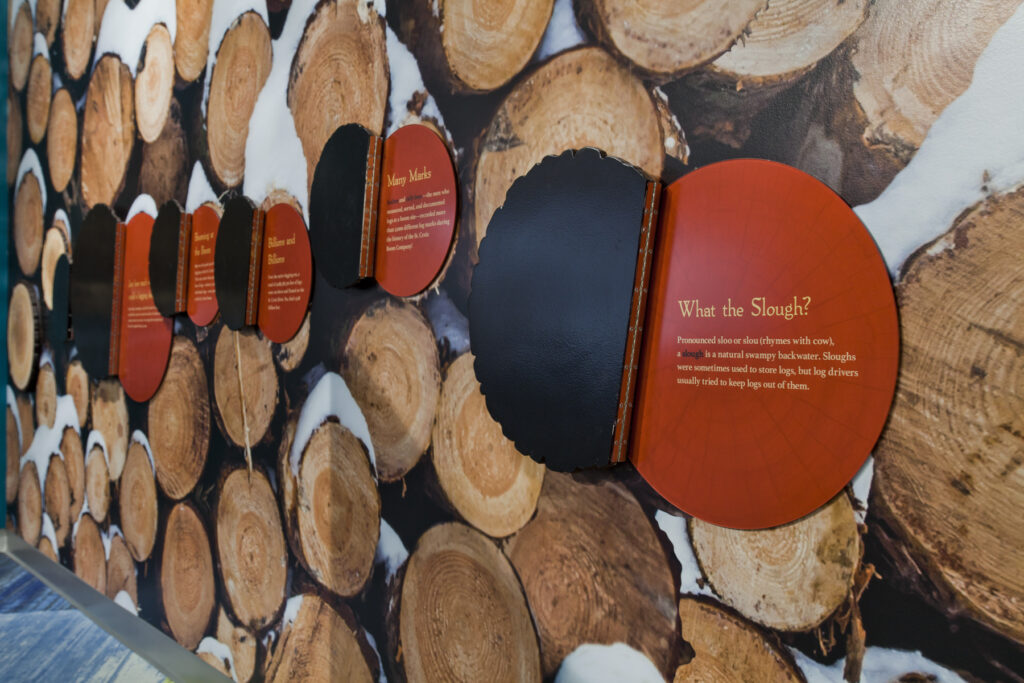
It’s such a cool way to bring history into the present and to make it interesting to both children and adults! That’s why I love museums because they make history fun and can inspire younger generations to want to work in them (like me, when I was younger!)
Are there any museums/exhibits that you remember that encourage participation like the Washington County exhibits above? Let us know what some of your favorites are!
Friday, July 13, 2023
Nora De Rege
First week of Farm-to-Table Camp!
I am happy to say that the first week of Farm-to-Table Camp is over! With some rest and space from the camp, even for just one day, I am able to say that farm camp was a great success! Even though I went home exhausted and dehydrated from running around and supervising children all day, I also left feeling satisfied, knowing that each of the campers had a great day. They had a safe space to get out their energy by playing lawn games, running around, making crafts. They also had great new experiences– many of them made bread and butter by hand for the first time this week! They also learned about farms and wildflowers, and many of them got a little more comfortable around bees.
So far, leading a camp at MAHS with Kyli, TJ, and Brittany has been an incredible experience! It is such a joy to witness the campers’ pure joy when we pull out Daisy the cow for them to milk or when they say that their favorite part of camp was making bread! As someone with years of experience as a farmer and as an avid bread maker, I am grateful for the opportunity to guide these campers through these experiences. Many of them are just now being introduced into these spaces, and I am happy to be part of forming their appreciation and curiosity for nature, art, and cooking!
So, despite my exhaustion and challenges I faced this week, knowing that children went home to their families everyday, excited to come back to farm camp made it all worth it. I am really looking forward to another three weeks of pure farm kid joy!
– Nora
Monday, July 17, 2023
Kyli Knutson
Stories of Summer Camp at MAHS!
This week was our first week of day camps at the MAHS Museum! I was kinda nervous the coming days before camp but after Monday, I quickly realized that there was no reason to be. Meeting all of the kids and seeing them interact with the history and activities at the museum was a blast to experience! They got to milk Daisy the Cow (who’s not a real cow, but close enough!), make lots of arts and crafts, explore nature, and play lots and lots of games!
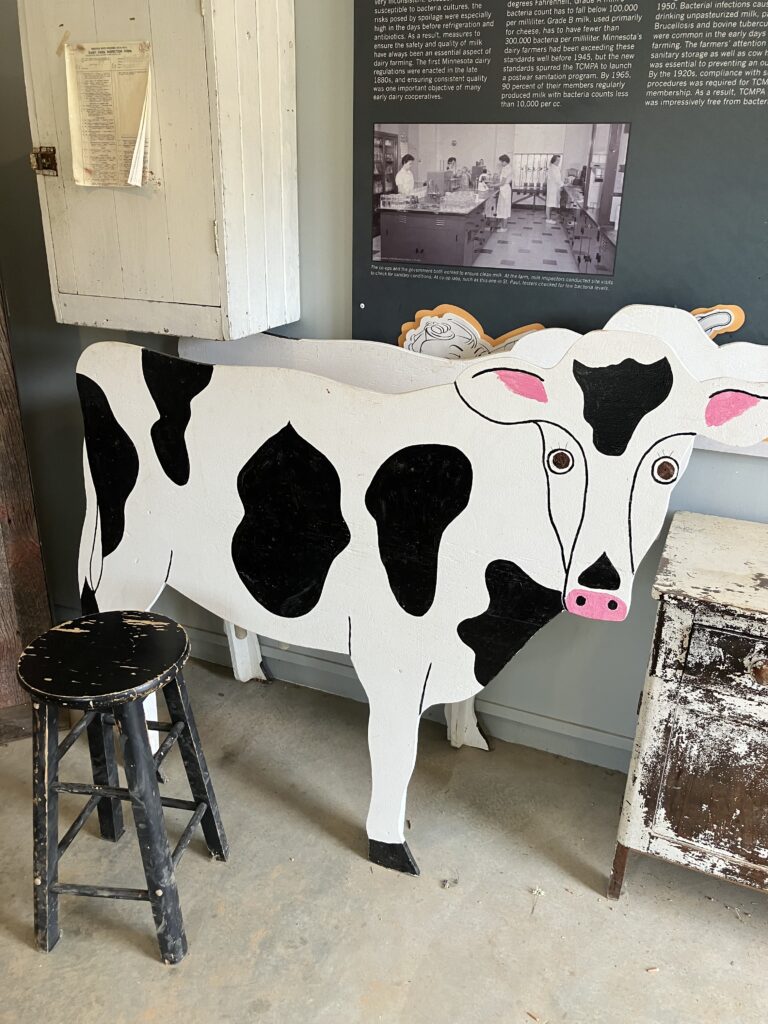
(Daisy the Cow)
They also had the opportunity to learn how a dairy farm operated back in the ‘50s, how to make bread and cheese on a farm, and even how to make a nice flower arrangement in a cute, little jar!
I think that my favorite part of camp was playing all the different games with the kids and seeing them smiling and having fun! They especially liked playing with the garden hose and pretending it was a dragon that they had to slay. There was also a pretend grocery store game some of the kids played, Ghost in the Graveyard, Grandmother’s Footsteps (an older version of Red Light, Green Light), and Freeze Tag.
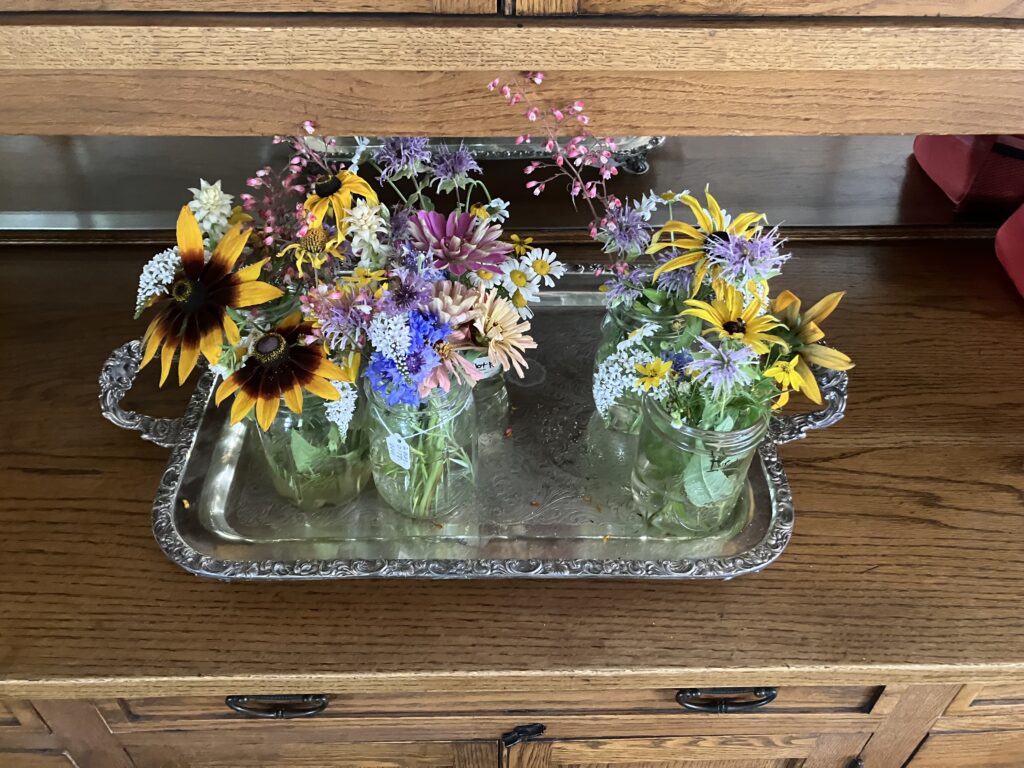
(Flowers that the kids picked and arranged)
There were some not as fun experiences that happened, but that kinda comes with the territory of trying to keep 30 kids busy for 7 hrs a day, each with different personalities that didn’t always mesh. Overall, I had a rewarding but also exhausting experience with this first week and look forward to making next week even better for the second week campers!
Friday, July 21, 2023
Nora De Rege
Farm-to-Table camp: Week 2
Right at the beginning of this internship, I realized that working at a museum was not going to be how I imagined it. My initial perception of museum work revolved around exhibit design, curation, and archives, and I had no clue about the vital programming and education work that keeps museums accessible to the public and younger audiences. So, while I miss doing the archival and research work that I had experienced the first few weeks of this internship, I recognize that running this camp, developing programming, and introducing children to the world of farms and museums is just another part of museum work. This type of programming work isn’t less intellectually stimulating than historical research– it is just different. By trying on all of the hats of museum work, this internship is really opening my eyes to which part of museum work I am actually drawn to, and, more importantly, which aspects of museum work I do not enjoy. With this knowledge, I can enter a workplace with leverage, and curate my ideal work space, filled with projects and tasks that energize me, rather than leaving me burnt out.
With all that being said, I am not sure if public programming and education is really the route I want to take in museums. As someone who was not trained in education, I often feel out of my depths working with 20-30 children per week. But each week of camp gets a little bit easier – I take the lessons I learned from the week before, and apply them to our program for the week and the way we carry out that programming. The challenges, which are often unpredictable and unimaginable until they are happening, become easier to deal with, week by week. I imagine that if I continued working in education or programming at a museum, the antsy feeling I have around this work would quickly dissipate, and it would just become another hat that I would gladly wear in museum work.
Enjoy some photos I took this past week at the camp! The flowers were picked by campers the week before, and given to T.J. as a thank you gift for organizing such a wonderful camp.
Nora
Friday, July 21, 2023
Kyli Knutson
Over this past week, I continued researching for my ongoing Capstone project. Instead of looking up information on my topic directly, I decided to focus on how I want to present my topic to an audience. The options that I explored included an online exhibition format and a booklet format.
I really enjoyed some of the online exhibits that the Smithsonian has put out, including one about Afrofuturism and another about a specific Abraham Lincoln portrait by W.F.K. Travers. I loved the way the Afrofuturism exhibit organized all of the information and made connections to different collection items, as shown below.
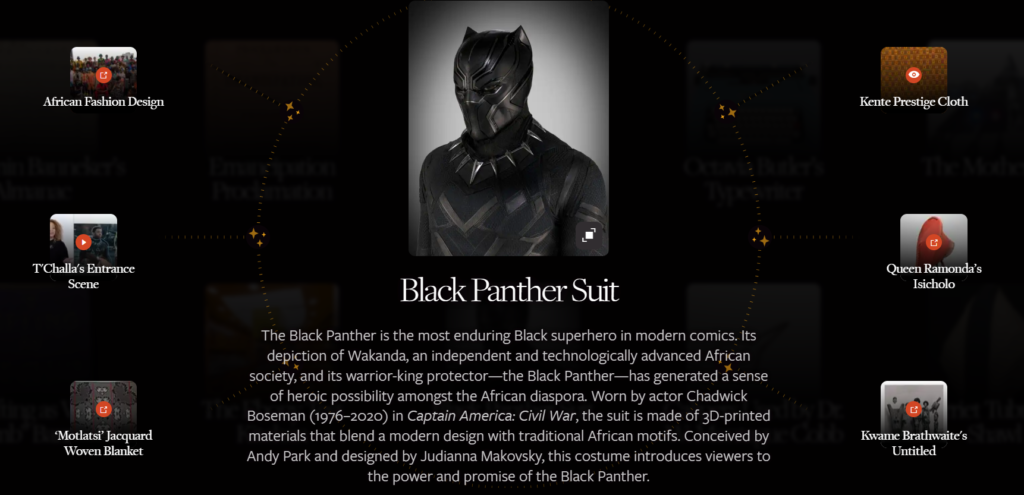
I realize that my project would probably not be as high tech as this one, but I think that there’s some cool ideas that I can take from this exhibit, like the making connections tool and the engaging layout/photos.
With the Abraham Lincoln portrait, I really like how it can zoom in on specific details of the painting because I think that would translate well with my project. Some of the books I want to use that are in the MAHS Collection have handwriting in it from the previous owners, so being able to zoom in on that writing would be a really cool way to present those books.

First image of the Lincoln portrait online exhibit
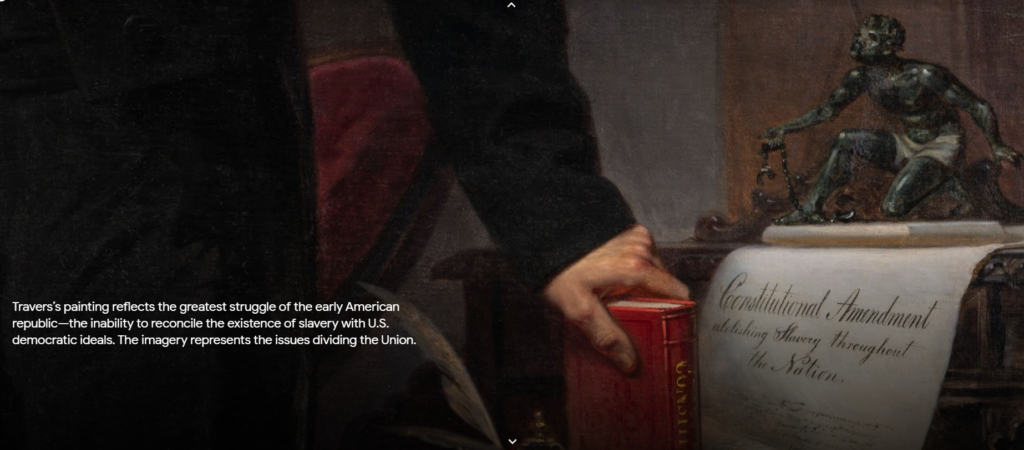
Zoomed in photo of a specific part of the portrait
I’m very eager to keep working on my Capstone project and whittling down what I want it to look like! I’m going to keep exploring online exhibits and physical booklets to gather more ideas as well. Are there any online exhibits that you have come across that you liked? Let me know in the comments below!
Friday, July 21, 2023
Nora De Rege
Farm-to-Table camp: Week 2
Right at the beginning of this internship, I realized that working at a museum was not going to be how I imagined it. My initial perception of museum work revolved around exhibit design, curation, and archives, and I had no clue about the vital programming and education work that keeps museums accessible to the public and younger audiences. So, while I miss doing the archival and research work that I had experienced the first few weeks of this internship, I recognize that running this camp, developing programming, and introducing children to the world of farms and museums is just another part of museum work. This type of programming work isn’t less intellectually stimulating than historical research– it is just different. By trying on all of the hats of museum work, this internship is really opening my eyes to which part of museum work I am actually drawn to, and, more importantly, which aspects of museum work I do not enjoy. With this knowledge, I can enter a workplace with leverage, and curate my ideal work space, filled with projects and tasks that energize me, rather than leaving me burnt out.
With all that being said, I am not sure if public programming and education is really the route I want to take in museums. As someone who was not trained in education, I often feel out of my depths working with 20-30 children per week. But each week of camp gets a little bit easier – I take the lessons I learned from the week before, and apply them to our program for the week and the way we carry out that programming. The challenges, which are often unpredictable and unimaginable until they are happening, become easier to deal with, week by week. I imagine that if I continued working in education or programming at a museum, the antsy feeling I have around this work would quickly dissipate, and it would just become another hat that I would gladly wear in museum work.
Enjoy some photos I took this past week at the camp! The flowers were picked by campers the week before, and given to T.J. as a thank you gift for organizing such a wonderful camp.
– Nora



